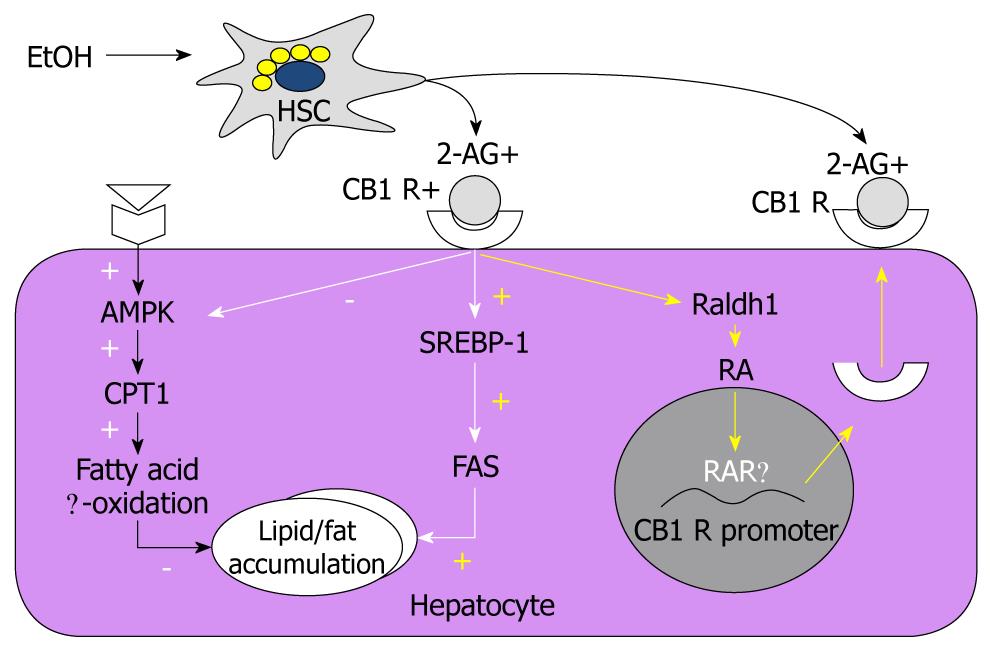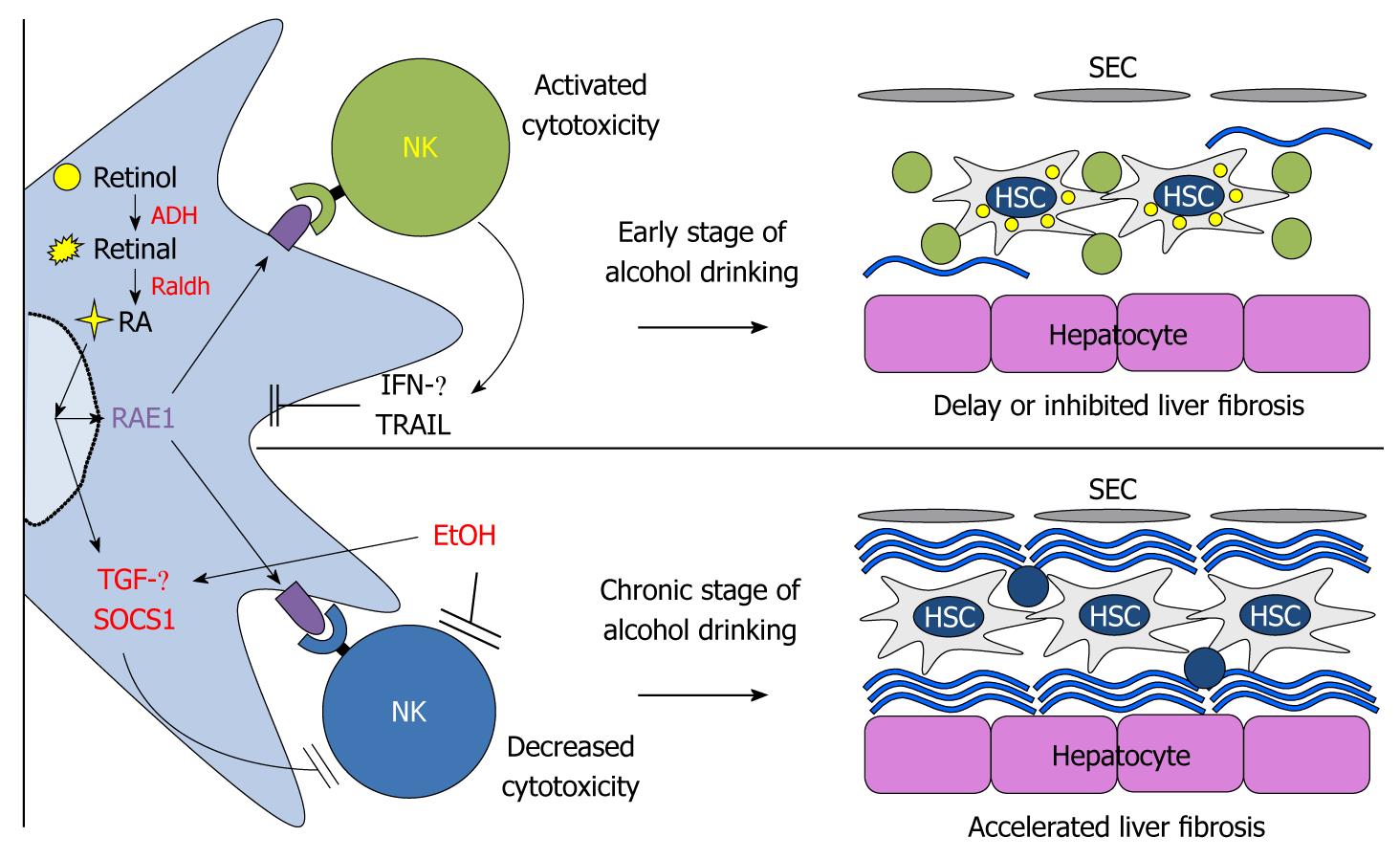Copyright
©2011 Baishideng Publishing Group Co.
World J Gastroenterol. May 28, 2011; 17(20): 2543-2551
Published online May 28, 2011. doi: 10.3748/wjg.v17.i20.2543
Published online May 28, 2011. doi: 10.3748/wjg.v17.i20.2543
Figure 1 Regulatory mechanisms of the hepatic lipogenesis and CB1 receptor expression via hepatic stellate cell-derived endocannabinoids/CB1 receptors and retinoic acid/retinoic acid receptor-γ in hepatocytes, respectively.
CB1 R: CB1 receptor; AMPK: AMP-activated protein kinase; HSC: Hepatic stellate cell; 2-AG: 2-arachidonoylglycerol; SREBP-1: Sterol regulatory element-binding protein-1; FAS: Fatty acid synthase; RA: Retinoic acid; RAR: Retinoic acid receptor.
Figure 2 Mechanism of natural killer cell cytotoxicity against activated hepatic stellate cells.
STAT: Signal transducer and activator of transcription; IFN: Interferon; NK: Natural killer; HSC: Hepatic stellate cell; MHC: Major histocompatibility complex; RAE1: Retinoic acid early inducible-1; RA: Retinoic acid; ADH: Alcohol dehydrogenase.
Figure 3 A model for chronic alcohol acceleration of liver fibrosis via inhibition of natural killer cell killing against hepatic stellate cells and suppressor of cytokine signaling 1 suppression of interferon-γ signaling in hepatic stellate cells.
SEC: Sinusoidal endothelial cell; ADH: Alcohol dehydrogenase; HSC: Hepatic stellate cell; RA: Retinoic acid; RAE1: Retinoic acid early inducible-1; IFN: Interferon; NK: Natural killer; TGF: Transforming growth factor; SOCS1: Suppressor of cytokine signaling 1.
- Citation: Suh YG, Jeong WI. Hepatic stellate cells and innate immunity in alcoholic liver disease. World J Gastroenterol 2011; 17(20): 2543-2551
- URL: https://www.wjgnet.com/1007-9327/full/v17/i20/2543.htm
- DOI: https://dx.doi.org/10.3748/wjg.v17.i20.2543











